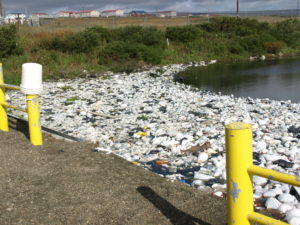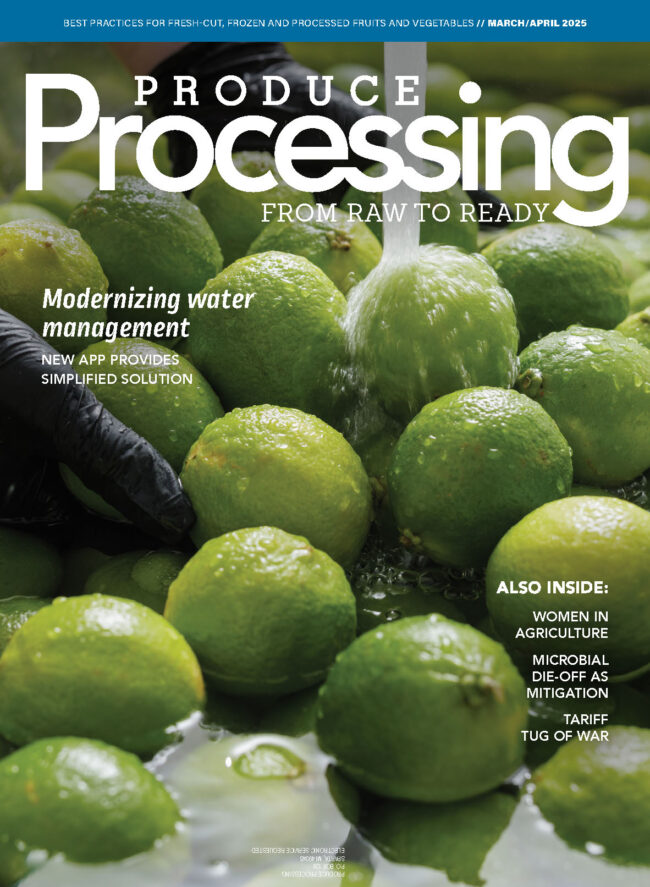Finding the balance between food waste and plastic waste
In the United Kingdom, 3.7 million tons of plastic is wasted each year. Food waste, on the other hand, accounts for 10 million tons. Yet over half of UK consumers believe that food packaging is wasteful and unnecessary, and 88 percent believe that packaging waste is a bigger issue than food waste. The time may be right for the public to change its thinking on plastic and food waste, and try to find a balance between the two.
How bad is the problem?
Addressing this plastic/food waste dichotomy, Will Mercer, group research and development director at UK packaging company Coveris, shared statistics in a talk at Fruit Logistica in Berlin earlier this year. Of the 3.7 million tons of plastic wasted each year, nearly 2.2 million tons of that is packaging, he said, and 1.5 million tons is rigid plastic. Only 35 percent of this is currently recycled. Food waste, on the other hand, accounts for 10 million tons at a value of nearly $22 billion dollars. Of that, 39 percent is household waste that ends up in the landfill.
“So what we have to do is make sure that we design plastic to extend life and maximize that resource with a minimal impact on the environment,” Mercer said. “As consumers, we’re producing more food waste than packaging waste. The environmental impact around that is constantly growing and the pressure is constantly mounting.”
Changing consumer demands have led to innovation in fresh and processed foods, said Eric Duncan, head of science at Coveris. For one, more people prefer to do a weekly shop rather than shop several times per week. Also, more and more people live alone, which has led to increased demand for single portions. Currently, some 7.7 million people live alone in the UK, a figure that is set to rise by a quarter in the next 25 years.
In some cases, there are effective recycling schemes established, but consumers simply don’t use them. “If you look at the amount of packaging that gets lost and doesn’t go into that stream, that’s not the fault of the manufacturer,” Mercer said. “That’s the fault of the consumer.”

Photo courtesy of Larry Yerich and Tasha Deardorff, USDA
The solution isn’t elimination, though, he said. The solution is resource efficiency. “When it’s wrong to have packaging, take that packaging out,” he said. “When it’s right to have packaging, make sure it’s the right packaging.”
Currently, Mercer said, a lot of virgin material is used in the production of packaging. But it’s done simply because there isn’t a suitable recycled or biodegradable plastic available.
It’s not just about resource management, though; another way to reduce plastic waste is to rethinking its use entirely. Aaron Rachlin, business developer at Perfotec, a Dutch company that creates breathable films for the food industry, said one of those solutions is switching from clamshell packaging to top-seal packaging.
Top sealing is a flexible solution that is ideally suited to soft or delicate produce, like cut apples, fruit salads, mixed greens and prepped green salads, he said. Proseal America, a company that offers machinery for top sealing, estimates that replacing the clip-on lid and clamshell with heat sealed film can reduce plastic waste by 30 percent. The reduction puts this method in line with where market demand is headed.
“Perfotec adds our laser system in line with the top seal machine, but just upstream of when the package is top sealed, so we can burn from 50 to 150 micron holes into the top seal film, which creates the modified atmosphere,” Rachlin said.
Rachlin said the switch from clamshells to top sealing has been slow, but U.S. companies are getting excited. In fact, Rachlin is currently doing shelf life testing using their system with a client in the U.S. for sliced apples. They’ve also got technology that he said works great with mixed greens and processed lettuce.
New bio-plastic for food
In Canada, Agriculture and Agri-Food Canada researchers are working on a new, environmentally friendly bio-plastic that will keep meat, dairy and other food products fresher for longer. The plastic, developed by scientist Qiang Liu, is made from the byproducts created by the industrial processing of certain plants. Not only will it better protect food, but it is also environmentally friendly and sustainably produced, Liu said.
“I, along with industry, saw great opportunity to create something useful out of the leftover by-product from industrial canola oil processing, which is why this project was funded under the Growing Forward 2 Canola Cluster,” he said in a recent press release. “We can extract all sorts of things like starches, proteins and oils from plant materials to make plastics, but I am particularly interested in proteins from canola meal in this research project.”
Plant protein-based bio-plastics have some of the same attributes as other plant-based plastics. That is, they are stretchable, don’t deform in certain temperatures, and some even biodegrade. The challenge, though, is that some protein polymers are sensitive to excess moisture, like those produced naturally by respiring products, like fresh salad greens. Liu and his team, however, have overcome this challenge through their discovery of a formula and technique that makes soy and canola protein polymers water resistant by “wrapping” them in another polymer. The team was even able to add an antimicrobial compound to the mix, which prevents bacteria like E. coli from growing.
Liu’s bio-plastic is still in the early stages of development. However, he believes that it holds great promise.
“The use of plant-based plastics as a renewable resource for packaging and consumer goods is becoming increasingly attractive due to environmental concerns and the availability of raw materials,” Liu said. “My hope is that someday this research will lead to all plastics being made from renewable sources.”
“It would be a win for the agriculture sector to have another source of income from waste and a win for our environment,” he said.
— By Melanie Epp, contributing writer










